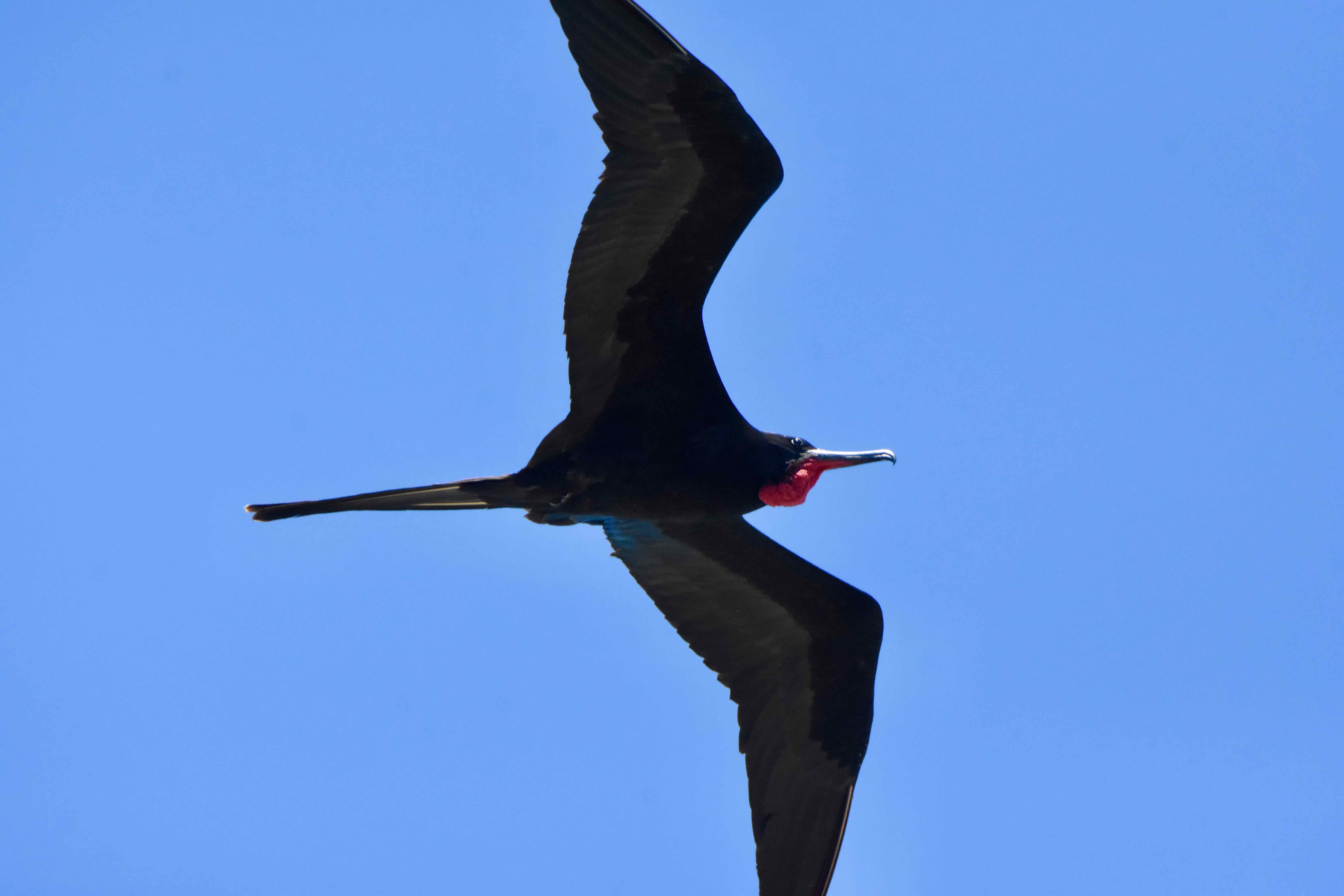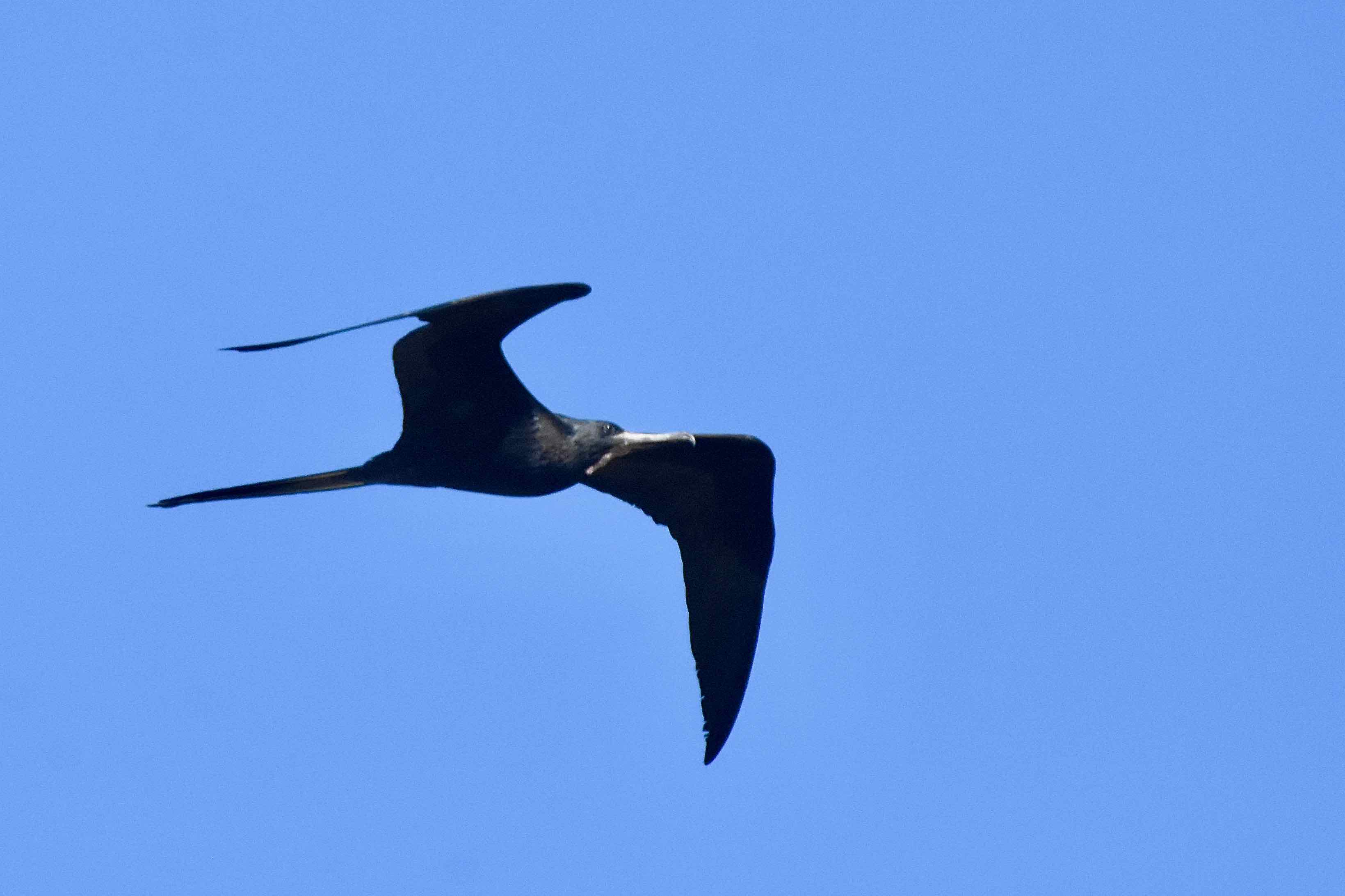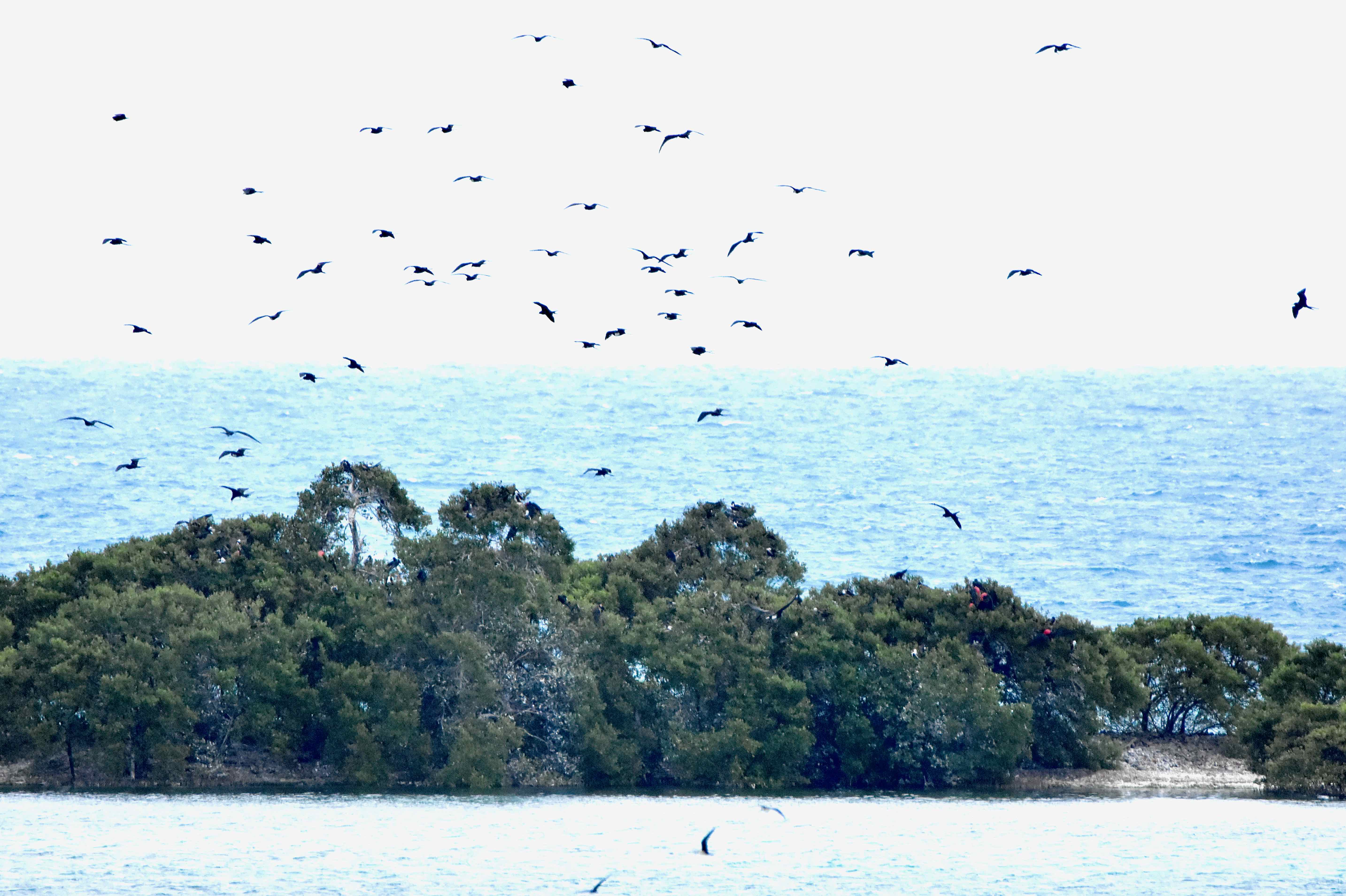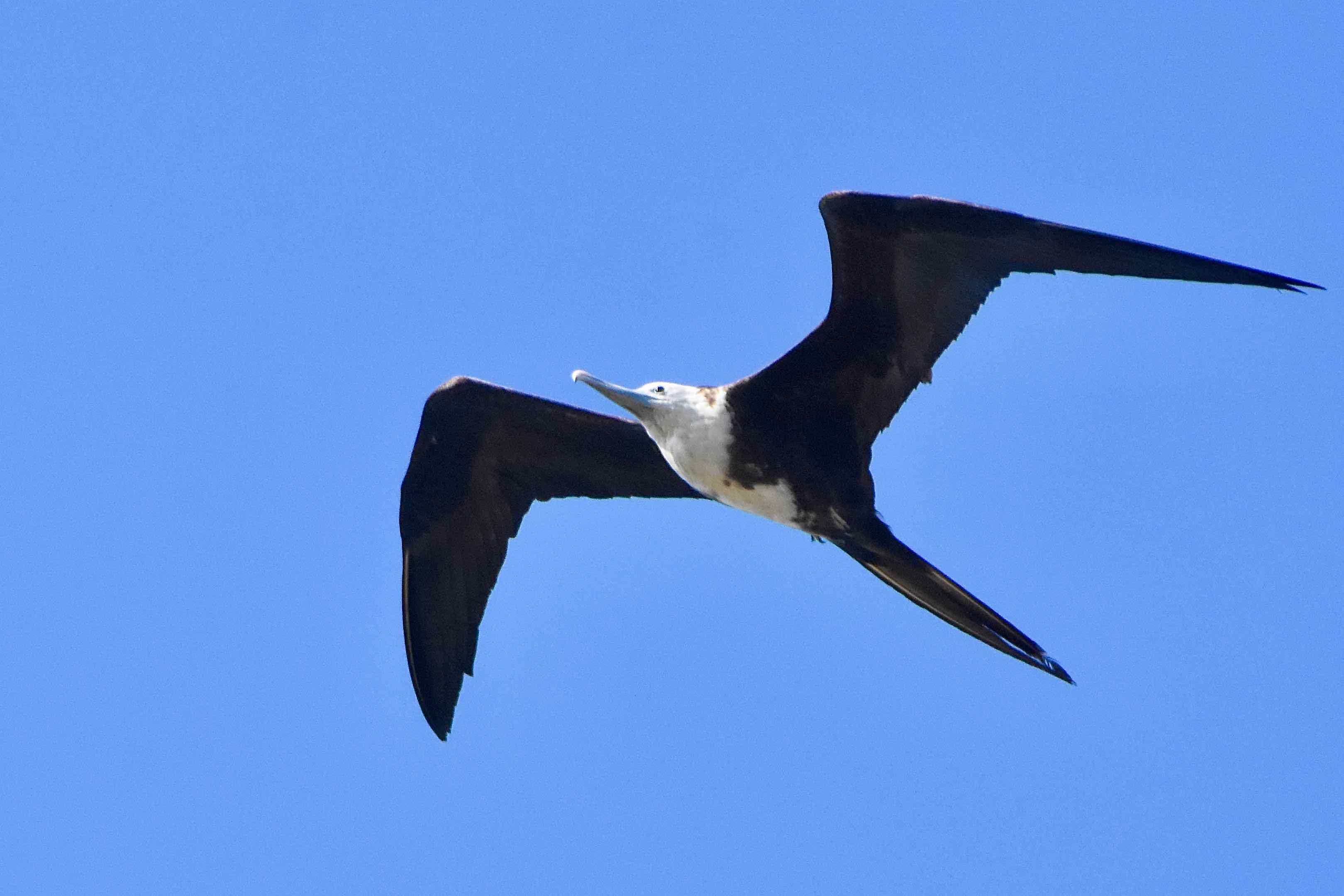
Magnificent frigatebird, photographed at Fort Jefferson, Garden Key, Dry Tortugas National Park, Monroe County, in April 2017.
These birds were built to fly. And fly. And fly. And fly. And so they do. Magnificent frigatebirds, Fregata magnificens, spend their days soaring seemingly endlessly with the help of those upward drifting columns of warm air called thermals.
There's no other bird quite like the magnificent frigatebird. Its huge size and unique form — long, angular wings, dark colors and v-shaped tail — identify it instantly even to the casual birder, even at great distances.
South Florida is about as north as this bird normally roams. It's frequently seen drifting above the coast but rarely inland, and rarely perched. Its range extends through the Caribbean, Mexico and Central America to Brazil on the Atlantic side, and from California southward to Ecuador, including the Galapagos Islands, on the Pacific. They occasionally stray as far north as North Carolina and all parts of the Gulf.
There is a breeding colony in the Cape Verde Islands off the western coast of Africa; strays have been seen in various parts of Europe as far away as Denmark.
Magnificent frigatebirds are regularly seen soaring above Fort Jefferson and Garden Key in the Dry Tortugas National Park, a short distance from Long Key, the only breeding colony of frigatebirds in the United States. The island is shown in the middle photo below, and if you look closely especially toward the right, you'll see some red, the gular sacks of perched males. More on gulars in a moment.
These are absolutely huge birds, with a body length that can approach four feet and wingspan of more than seven, but they weigh only two to four pounds, which certainly helps if you're a bird that is almost perpetually in flight. Their legs are comparatively short for their size, and not particularly helpful for walking or swimming.
Females are larger than males. Their faces are black but their chests are white. The faces of juveniles are white, with white undersides. Males have black faces and brown undersides, and sport an expandable red bladder on their throats called a gular sack, which they inflate like a balloon as part of their ritual to attract the ladies.
During breeding season, females fly high looking over the guys (literally and figuratively) who are sitting in trees and shrubs expanding their gulars, vibrating their wings and calling out. Once a couple hooks up, the female remains on the male's display site, waiting for him to gather nest-building materials, mostly twigs. She does the assembly, usually in shrubs or trees, sometimes on the ground. The nest itself is flat or slightly hollow, sometimes lined with softer material, like grasses and vines. Frigatebirds are colonial nesters — the largest gathering is on the Caribbean island of Barbuda, where it's estimated that there are 2,500 nesting pairs. By contrast, we're guessing that Long Key is in the low hundreds or less.
Frigatebirds don't begin to breed until they're at least five to seven years old. Females lay a single egg; both parents split incubation duties, which last between 40 and 50 days. Both parents also feed their offspring, at least for a while. It can take up to six months for the young frigatebird to fledge, and even then he'll return to the nest to be fed for four to six more months. At about 12 weeks, dad splits for the open seas, while mom continues to rear junior.
Frigatebirds never leave the nest unguarded until their chick is at least half-grown. Otherwise, junior might end up as a snack for one of the neighbors. The time it takes for a frigatebird to mature means that females usually mate only once every other year. Pairs remain monogamous for the breeding season, but rarely will they couple again.
A meal for a frigatebird might be a flying fish, squid, turtles, bird eggs and chicks. They'll soar overhead, wait for a predator, such as a tuna, to drive dinner to the surface of the water, then swoop in and scoop up the meal. The method allows frigatebirds to conserve energy and remain in flight. They'll also harass other birds to get them to surrender their catch. (We saw one attempt by a juvenile near Cozumel several years back, the encounter lasting a few seconds.)
The Marquesas Keys off Key West were once the site of a colony of frigatebirds estimated to be as large as 250 pairs, according to the Florida Fish and Wildlife Conservation Commission. By the 1980s, it had declined to about 50 because of disturbances created by boaters and fishermen. It's believed the colony moved to Long Key in 1988, when 40 pairs nested there for the first time.
Globally, the frigatebird population is seen as secure by the International Union for Conservation of Nature, which cites the bird's large range, current population and the fact that frigatebird numbers are increasing. The Avian Research and Conservation Institute isn't so sanguin and sees habitat loss, declining fisheries and sea level rise as threats to their existence. It notes that half of the Caribbean colonies are no more. It's conducting a tracking study of five frigatebirds caught in the Keys to see where they breed. Efforts are also being made to establish a second breeding colony on isolated islands within the Keys.
Frigatebirds are members of Frigatidae, the frigatebird family.
Fort Jefferson, Garden Key, Dry Tortugas National Park



